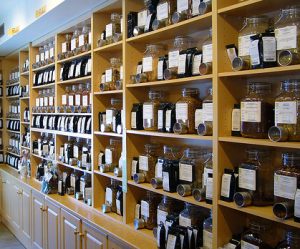
A wonderful thing about tea is its great variety. A wide range of different colors, flavors, and aromas; all coming from the same plant.
Tea can be classified in six categories, with the degree of oxidation being the most important aspect regarding the type of tea.
Let’s take a look at each type of tea. The process can be different for specific teas, so they’re general descriptions.
Green tea
My favorite type of tea 🙂 Green tea is minimally oxidized because the fixation process (to stop oxidation) is performed at the beginning. This is accomplished by steaming the tea leaves (Japanese method) or by pan-frying them (Chinese method).
Most Japaneses teas fall into this category, the most popular one being sencha. In case you’re interested, I have a list of all the types of Japanese green tea with brewing instructions.
Black tea
Black tea has the highest degree of oxidation. The tea leaves are first allowed to wither, then they are oxidized in a place with high humidity and some heat.
Black tea is the most popular tea in the west. It’s also the tea used in iced tea.
By the way, did you know that there’s Japanese black tea?
Oolong Tea
Oolong tea is partially oxidized, so it falls somewhere between green and black tea. Because of the different degrees of oxidation, there is a great variety in Oolong teas.
A well-known oolong is the Tieguanyin (sometimes called Iron Goddess), which is made in China. A surprising fact is that oolong tea is widely consumed in Japan, although it’s not intensively produced there.
Interestingly, it’s also called blue tea.
White tea
White tea is the least processed tea. The tea leaves are initially withered, so there is a small degree of oxidation in white tea. The oxidation is stopped by baking until dry.
The distinctive aspect of white tea is that it’s made with new buds that have little white hairs, hence the color . The most popular white tea is probably silver needle, and it’s also the most expensive.
Yellow tea
Yellow tea can be thought of as a green tea with an additional “yellowing” process, unique to this type of tea.
The leaves are heaped, and then heat and humidity is applied. This process makes the leaves yellow because of oxidation of chlorophyll.
Yellow tea is available in relatively small quantities outside of China. Thus, it’s considered to be rare.
Post-fermented tea
Post-fermented tea, also called dark tea, starts out similar to green tea but at the end it is aged. The aging can last from several months, to many years.
During the aging process this tea undergoes fermentation (in this case, a chemical reaction involving microbial activity) and not just oxidation as in other types of teas.
The most famous post-fermented tea is pu-erh. Sometimes you’ll hear people using the word pu-erh to refer to post-fermented teas in general but it’s not right to do so because pu-erh only comes from the Yunnan region in China.
What’s your favorite type of tea?










